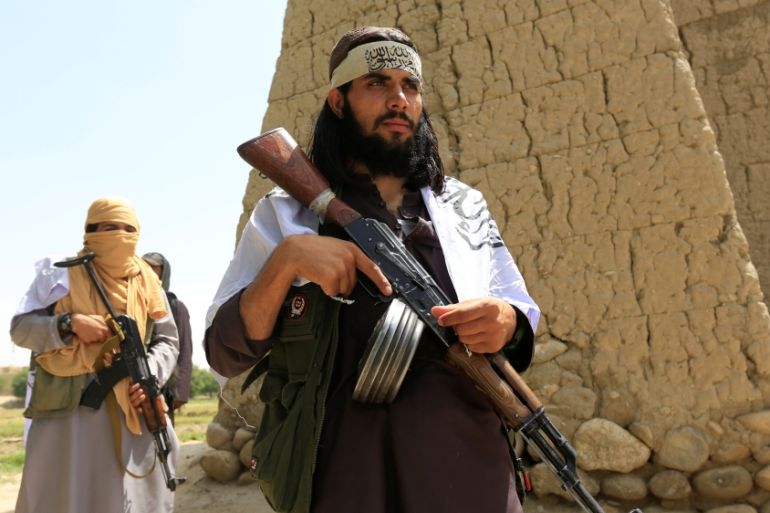US army halts tracking land controlled by Afghan gov’t, fighters
US watchdog says army stopped tracking territory controlled by various sides in Afghanistan as peace talks resume.

The US military has stopped tracking the amount of territory controlled or influenced by the Afghan government and armed fighters, a US watchdog said on Tuesday, one of the last remaining public metrics that tracked the worsening security situation in the war-torn country.
The move comes as United States and Taliban officials held several rounds of talks, the latest of which began on Wednesday in Doha, the Qatari capital, according to a Taliban spokesman.
Keep reading
list of 4 itemsPhotos: Tourist numbers up in post-war Afghanistan
Taliban ban on girls’ education defies both worldly and religious logic
Afghanistan calls for ‘respect’ after Cricket Australia snub
The Taliban announced the start of a spring offensive in early April. Even before the announcement, combat had intensified across Afghanistan in recent weeks and hundreds of Afghan troops and civilians have been killed.
The Special Inspector General for Afghanistan Reconstruction (SIGAR) said in a report published late Tuesday night that the US military had told the watchdog it was no longer tracking the level of control or influence the Afghan government and fighters had over districts in the country.
The NATO-led Resolute Support (RS) mission in Afghanistan had told SIGAR that the assessments were “of limited decision-making value to the (RS) Commander.”
Colonel David Butler, spokesman for US Forces in Afghanistan, said that while Resolute Support was no longer doing the analyses, the intelligence community did its own classified assessment of districts controlled by the government and the Taliban.
He did not speculate on whether the intelligence community analyses would continue or not.
“This much is clear: There’s even less information for American taxpayers to gauge whether their investment in Afghanistan is a success, or something else,” John Sopko, the head of SIGAR, told Reuters news agency.
‘Human error in labeling’
A January report put districts under government control or influence at 53.8 percent, and covering 63.5 percent of the population by October 2018, with the rest of the country controlled or contested by the Taliban.
Experts said that the move to stop tracking the key data was worrying because Washington had publicly set a benchmark which would now be difficult to measure.
In November 2017, the top US general in Afghanistan at the time set a goal of driving back Taliban fighters enough for the government to control at least 80 percent of the country within two years.
“If the military is not going to be tracking that data any more, that is going to make it a lot more difficult to get a sense as to how strong the Taliban is,” Michael Kugelman, with the Woodrow Wilson Center, said.
“That may well be the military’s intention,” he said.
Over the past few years, the US military has restricted data on the Afghan war being shared with the public, including the size of the security forces, casualty numbers and the attrition rate for the Afghan National Defense and Security Forces (ANDSF).
In 2018, the US military said that a “human error in labeling” caused it to treat as classified information the amount of territory controlled or influenced by the Taliban and the Afghan government.
The rest of the report painted a bleak picture of the security situation in Afghanistan.
Citing numbers from Resolute Support, SIGAR said the monthly average of enemy-initiated attacks increased by 19 percent from November 2018 through January 2019, compared with August to October 2018.
ANDSF casualties increased by about 31 percent from December 2018 through February 2019 compared with the same three-month period the previous year.
“The latest data from the few remaining publicly available measures of the security situation in Afghanistan – enemy-initiated attacks, general ANDSF casualty trends, and security incidents – show that Afghanistan experienced heightened insecurity,” the report said.